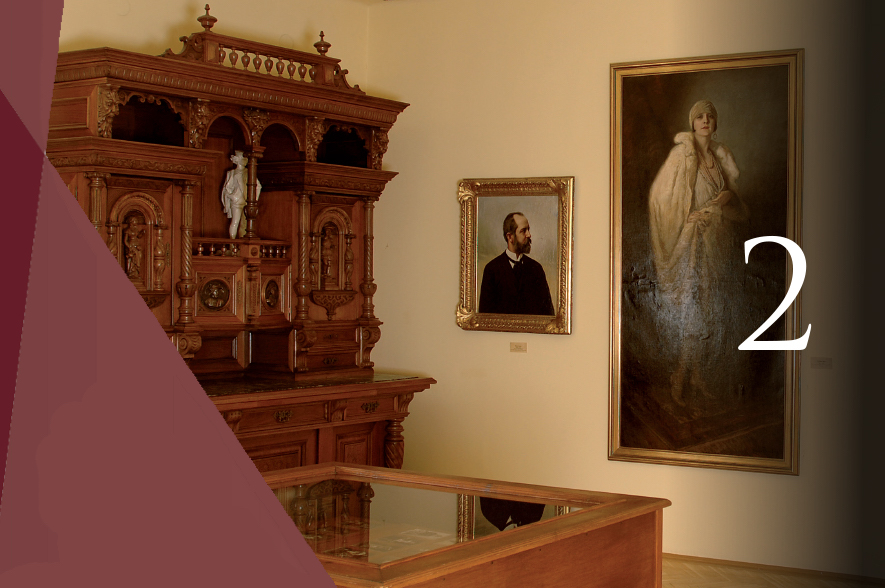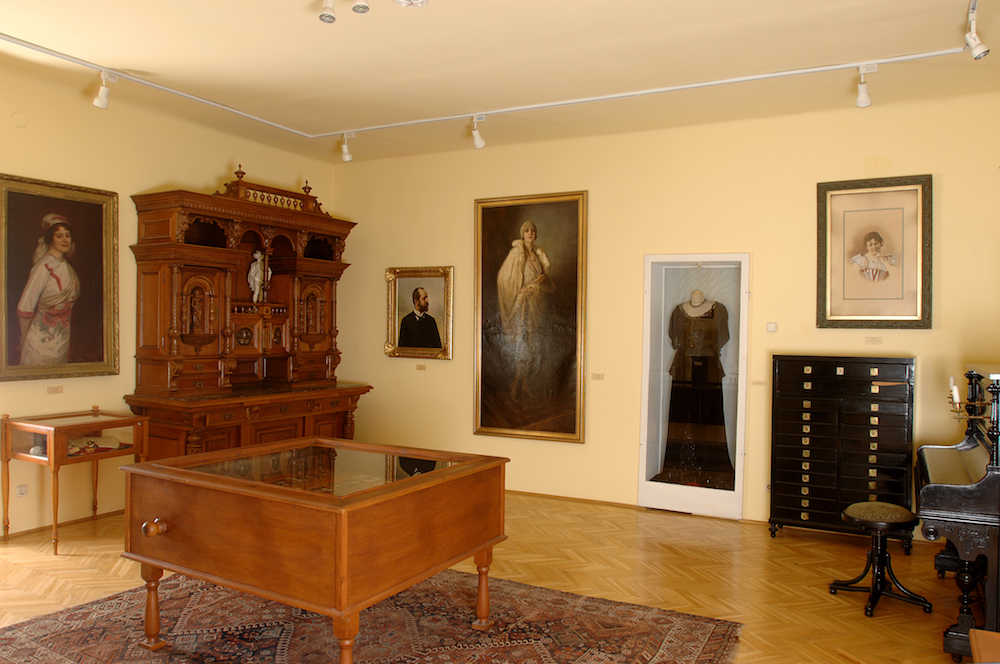
Az első teremben a legnépszerűbb színpadi műfaj, az operett történetének néhány jelentős alakjával ismerkedhetünk meg. Tanúi lehetünk a mű megszületésének. Huszka Jenő pianínója és kottaszekrénye a művészi alkotómunkát idézi fel, míg zeneszerző tálalószekrényre és tükre a huszadik század első felére jellemző polgári életformát jelképezi.
„Ez a műfaj abból él, hogy furcsa, különleges, rendhagyó, nagy egyéniségek játsszák, nem pedig szorgalmas, becsületes, szakszerű színi ipari dolgozók. Ennek a műfajnak azokat kell megszólítania, akik friss szellemmel, mit sem tudva jönnek a színházba, hogy először találkozzanak mindezzel, és azokat, akik elég rafináltak ahhoz, hogy megértsék a látottak második, harmadik értelmét is, de semmiképpen azokat a habituéket, akik azt akarják kapni, amit megszoktak, és nem azokat, akiknek »acsargó kritikus« elvárásaik vannak” – írta 1997-ben Szinetár Miklós rendező.
Ezeknek a gondolatoknak szellemében válogattunk a legjelentősebb primadonnák: Blaha Lujza, Fedák Sári, Pálmay Ilka, Hegyi Aranka, Honthy Hanna színpadi kellékeiből, emléktárgyaiból. Izgalmas jelenség Paseczki Zsolt díszlettervező találmánya, a forgatható tárló, amelyben háromszor annyi dokumentumot lehet kiállítani, mint a hagyományos vitrinekben.
Operetta
The first room of the exhibition presents some episodes from the history of the most popular theatre genre of the 19th and early 20th century, the operetta. In this room we can be witnesses to the work of the composer and the birth of the famous operettas. Composer Jenő Huszka’s piano and score cabinet evokes the process of artistic creation, while the sideboard and mirror also represents the bourgeois life style so typical of the early 20th century.
‘This genre seems so alive since it is performed by strange, weird, irregular and mighty personalities, instead of diligent, honest, technically impeccable craftsmen. This genre has to address those who come to the theatre with a fresh spirit without any preconceptions to meet all this for the first time, and those too, who are refined enough to understand the things seen, the second and third layer of the play’s meaning, but certainly not for those habitués, who wish to receive what they had been used to, and neither for those who nurture highly critical expectations.’ – wrote director Miklós Szinetár in 1997.
With these thought in mind we selected from the theatre props and personal belongings of the most important prima donnas: Lujza Blaha, Sári Fedák, Ilka Pálmay, Aranka Hegyi, Hanna Honthy. Exhibition designer Zsolt Pasecki devised an ingenious solution, the rolling display, which enabled us at the time, to display three times as many documents as in a more conventional display.

